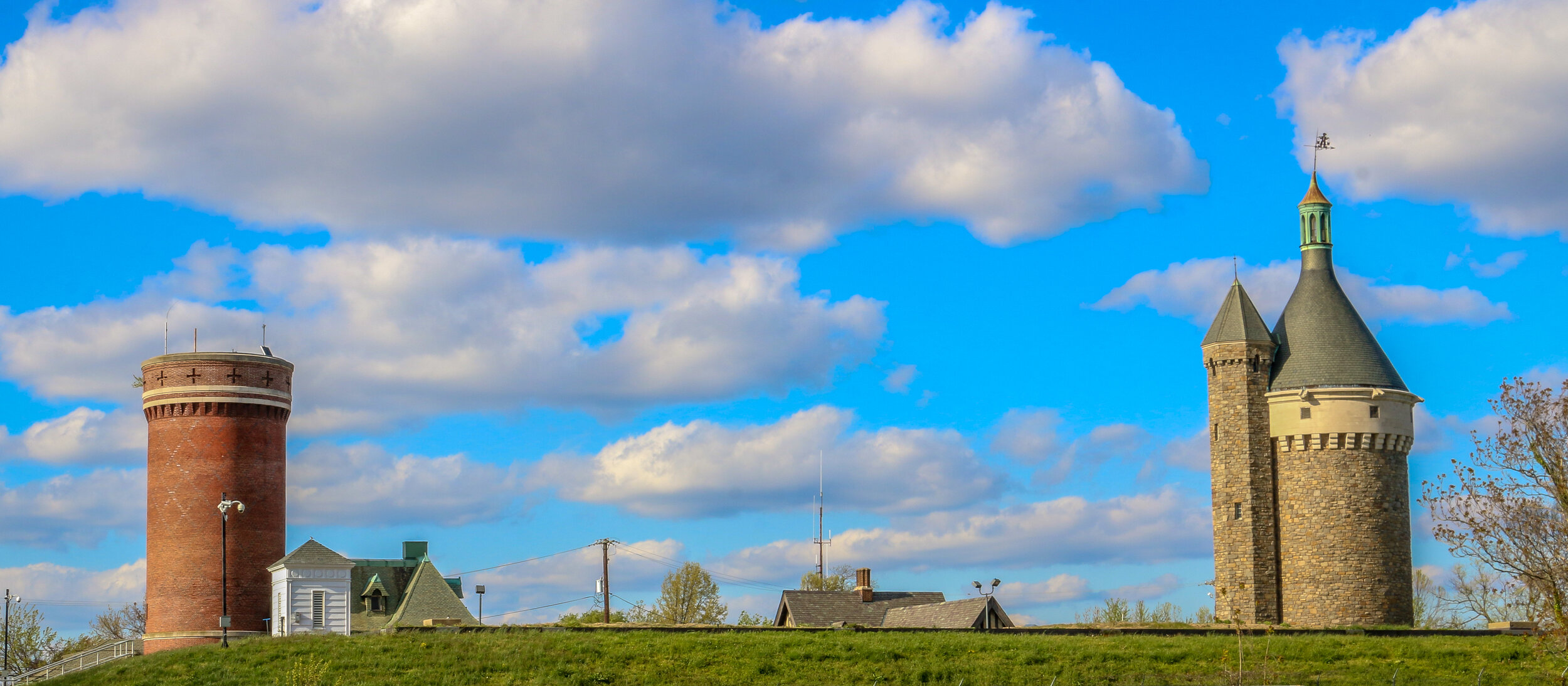Tenleytown grew up around the intersection of what are now River Road and Wisconsin Avenue, two roads which long predate both the city of Washington D.C. and the United States. River Road, in fact, predates European settlement to the area altogether, serving as a Native American trail to the Potomac River. In the early days of European settlement, the roads were used to transport goods from surrounding farms to Georgetown, then a major port city on the river. It is not surprising, then, that John Tennally, from whom the neighborhood takes its name, would build a tavern and blacksmith shop at the intersection of these historic roads. A small community soon grew up around the tavern and was known as Tennally’s Town. During the Civil War, Fort Pennsylvania was built nearby to protect the Capital City and was later renamed Fort Reno. After the war, a small African-American community known as Reno City was built in the area. When a streetcar came through at the end of the 19th century which connected Tenleytown to Downtown Washington, the neighborhood began to grow and flourish. Woodrow Wilson High School, Alice Deal Middle School and a water revoir and water tower were built, sadly displacing many of the residents of Reno City in the process. A proposed hospital on the site was never built. As the neighborhood developed, two major retailers, Sears and Roebuck and Hechinger’s Hardware Store, opened for business in Tenleytown and a Metro station further connected the neighborhood to the rest of the city. Today, Tenleytown is embracing its history as one of the oldest neighborhoods in what is now Washington D.C. with a wonderful historic walking tour and several historic plaques around town.
Tenleytown is very much my home neighborhood and holds many memories for me having grown up just down the street, in a house my family has lived in since it was built. My grandfather worked at Sears for many years after retiring from the Air Force, and while he died when I was very young I still remember visiting him there. My mother went to both Alice Deal and Woodrow Wilson schools, and has watched the neighborhood evolve and grow throughout her life. I was a cub scout in Pack 4 at St. Ann’s Church and a boy scout in Troop 1946 at National Presbyterian, and have fond memories of breakfast with my grandmother at the Steak ‘n Egg. I remember pizza at Maggie’s and Armand’s, long nights at the Malt Shop which once stood over the Dancing Crab restaurant, a Tenleytown institution for many years, and thousands of trips up and down the impossibly long escalator at the Tenleytown Metro Station. As I travel around the country taking photos of small towns and city neighborhoods I always love interacting with people for whom my photos bring forth fond memories of childhood. It’s amazing to look around this little community and find my own childhood memories pouring out. It’s always good to be home.
D.C. Quarantine Quarters is a series of photo essays from around my hometown, Washington D.C, in the time of our quarantine here due to Covid 19 in 2020. Washington D.C. is itself is divided into four quadrants or quarters, and people from the city strongly identify with which quadrant they grew up in. As a visual storyteller, my normal photo essays are long, but this series aims to be more succinct and include only 25 photos in each post, hence “quarters”. I hope you enjoy these photos of my hometown neighborhoods. Click on any photo to enlarge it. All photos are available for purchase and licensing, please contact me at the link below for more information.

